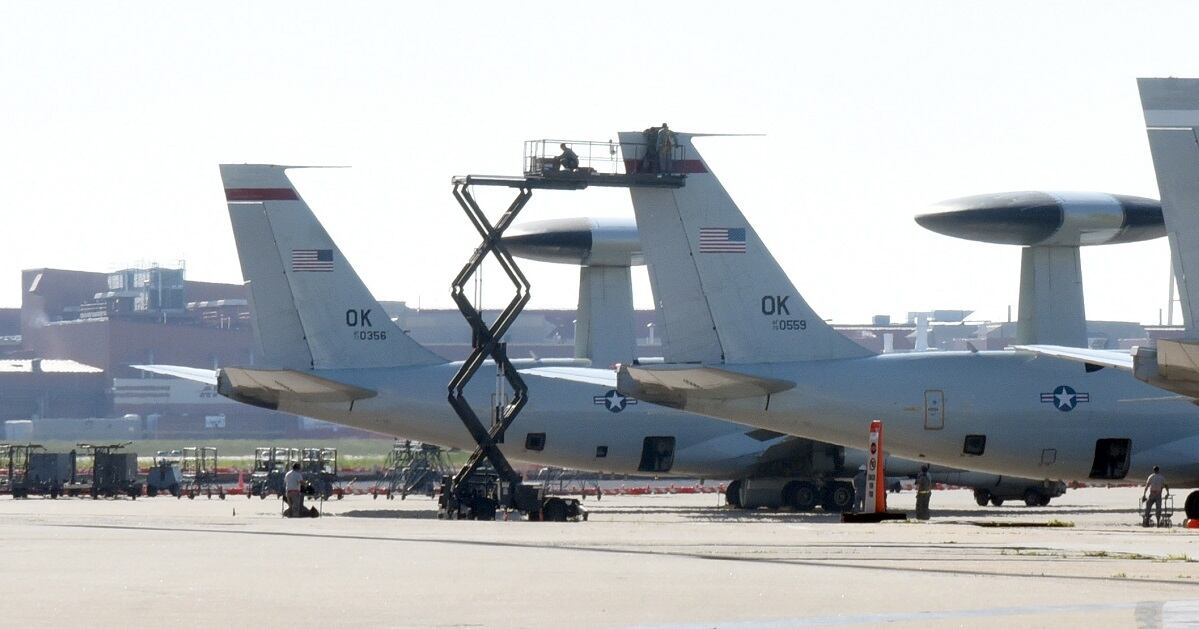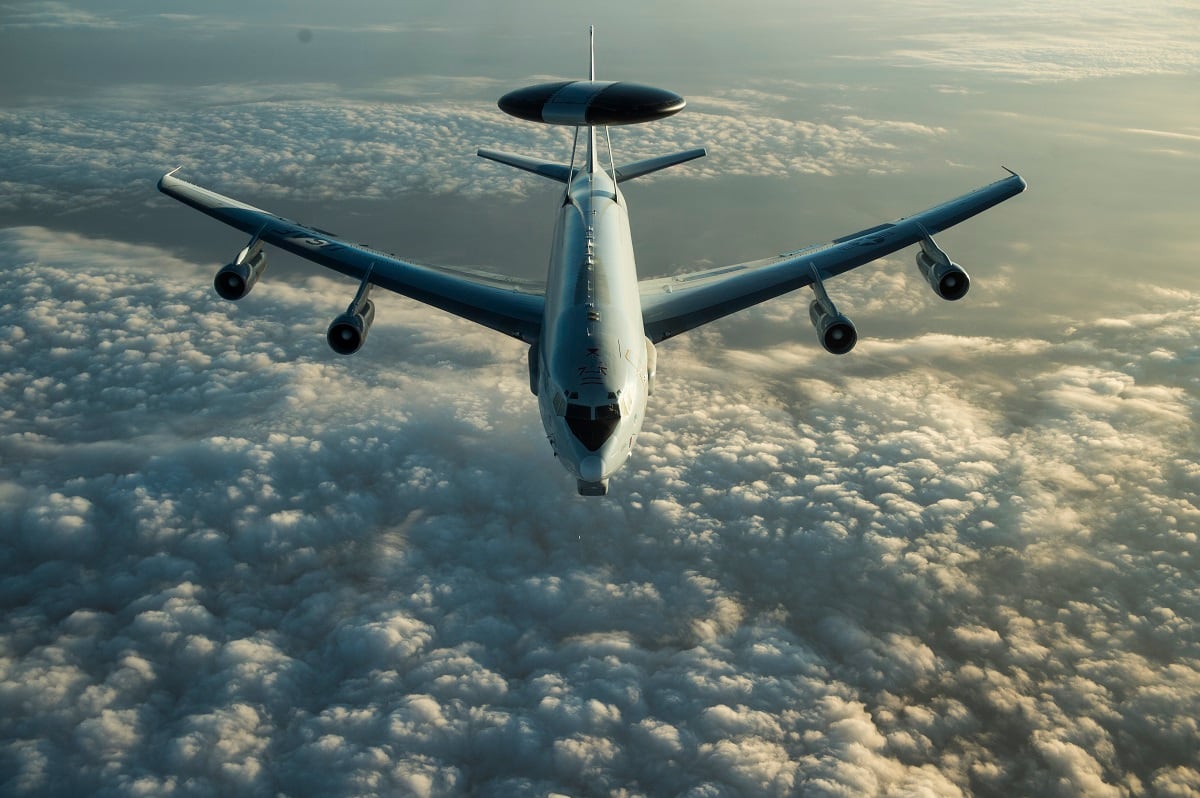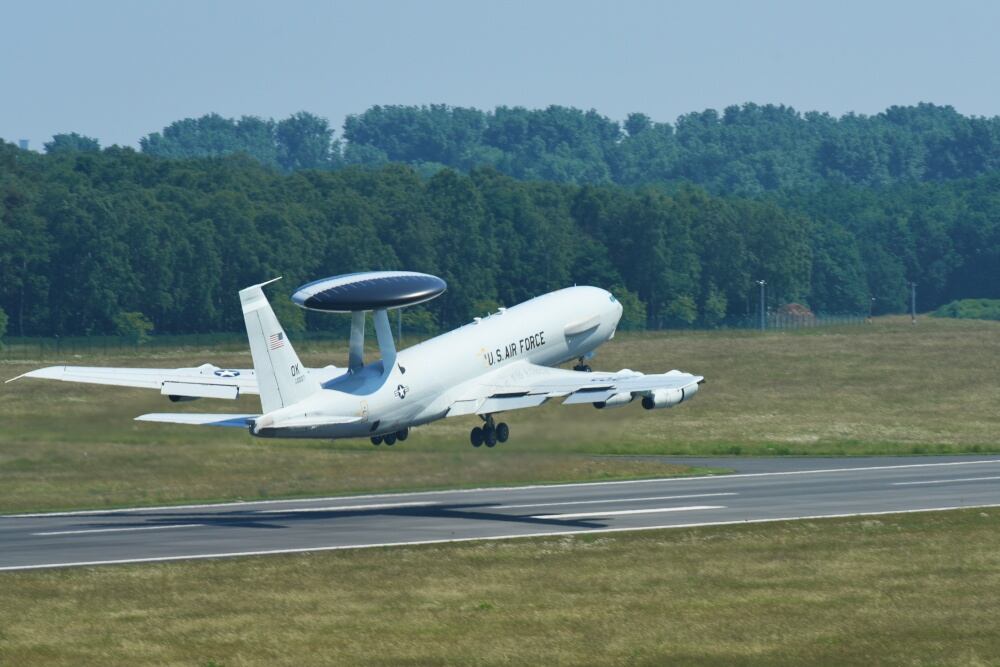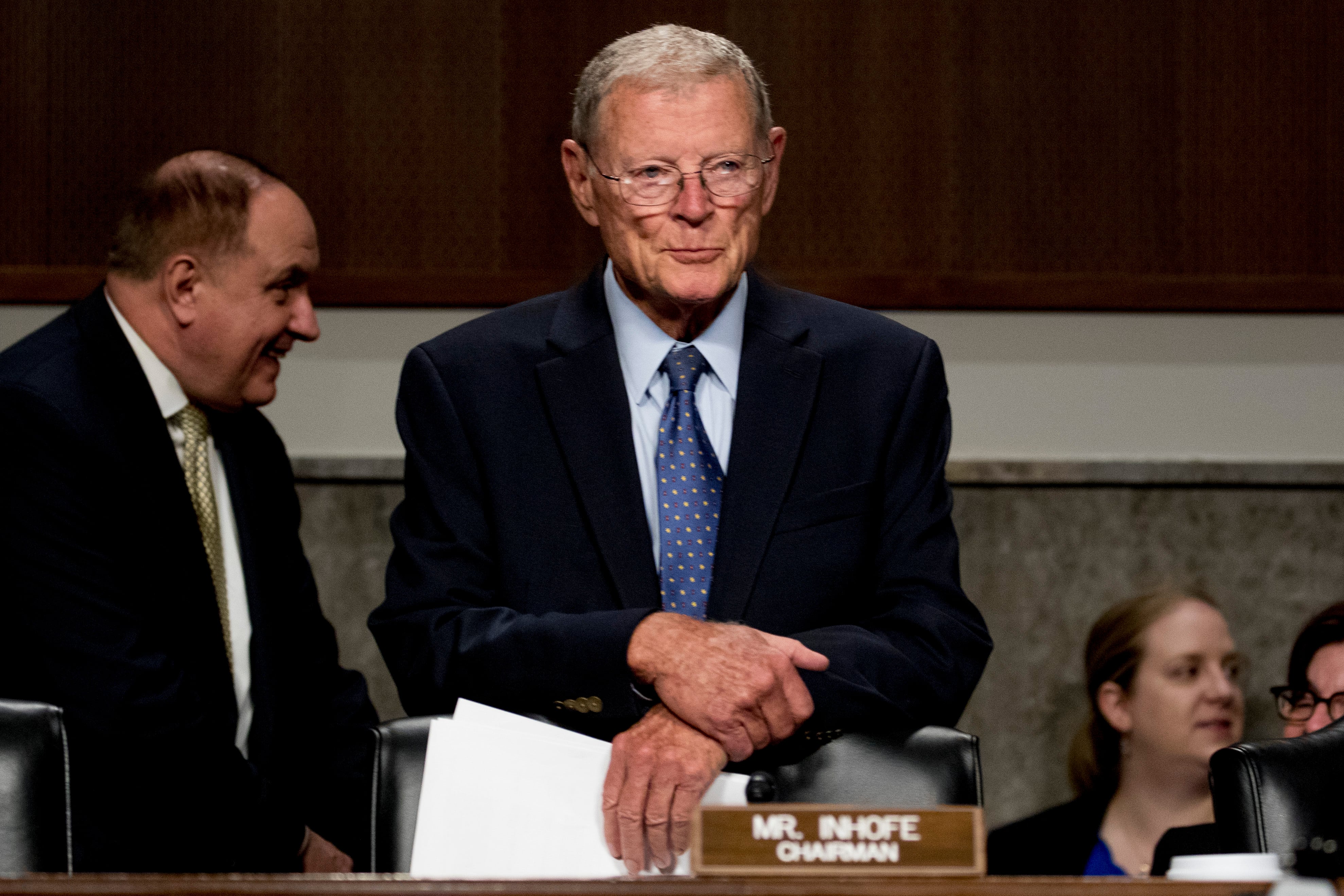The Air Force is launching three safety probes and a commander-directed investigation into potential problems at Tinker Air Force Base’s 552nd Air Control Wing in Oklahoma after aircrews canceled a command-and-control training exercise they felt was unsafe earlier this month.
A clash between airmen and 552nd Operations Group commander Col. Gary Donovan, who allegedly grew angry at the crews for stopping sorties he wanted to move forward, garnered attention on social media when their frustrations spilled into public view.
“[The 552nd at] Tinker is a wing that is destroying a culture of safety and pushing crews to fly in unsafe situations, letting leadership run rampant through overtasking and undertraining,” according to an anonymous note posted July 15 on the Air Force amn/nco/snco Facebook page.
The incident highlights long-simmering tensions over leadership gripes and safety issues in the E-3 Airborne Warning and Control System community, two airmen — a pilot and an air battle manager — who requested anonymity for fear of retribution told Air Force Times.
The E-3 Sentry is a modified 1970s-era airliner that uses a distinctive dome-shaped radar to track air war movements up to 250 miles away and to direct planes in combat, such as telling fighter jets to intercept a hostile target.
RELATED

AWACS crews in the 552nd Operations Group balked at the mission over flight safety concerns while preparing for training in mid-July. According to the Facebook post, they got ready for the event on July 12 until about 3 p.m. that afternoon, then headed home until they were again summoned at 2 a.m. on July 13 to finish getting ready. Then they were released around 9 a.m. that morning, with a call time 12 hours later to fly at night.
E-3 aircrews typically take 72 hours to pack their bags, prepare the jet and arrive overseas. In this case, they took issue with an unusual 48-hour turnaround that required them to stay up all night and sleep all day ahead of training.
Airmen worried the back-and-forth between homes and the flightline had disrupted their sleep schedules to the point that they would endanger the other crew members in flight. They were urged to treat the exercise as a real operation, but were denied access to sleeping pills to be well-rested as they may have in a true combat scenario.
“It’s not a matter of discipline,” a pilot with the wing told Air Force Times. “If you woke up at 8 a.m. after a full night of sleep, went into work, maybe you drank coffee, and you were told, ‘Go home, show up in 12 hours and be ready to fly,’ you are not going to be able to do that naturally.”

Crews showed up to fly on an average of three to four hours of sleep rather than the eight to 12 hours they are typically afforded, according to the post. People voiced their concerns about being too tired, and the sorties were canceled — a move reportedly backed by the wing’s vice commander, Col. Wayne Frost.
At a July 14 meeting with the 963rd Airborne Air Control Squadron, Donovan allegedly scolded the airmen for canceling the previous night’s flights.
“When one aircraft commander stood up to say that she didn’t even trust herself to drive home, let alone take an aircraft with 23 lives onboard, she was told by the group commander in front of her entire crew to ‘take a f***ing nap then,’” the Facebook post said.
An audio recording uploaded to YouTube on July 17 appears to show Donovan addressing airmen during a meeting. The speaker couched the incident as a “failure” and said he regretted not setting the expectation that airmen take the exercise more seriously.
“I’ve never seen anybody more prepared than you guys. I applaud you for that,” the speaker said. “But I guess that’s why the chasm is so big in my disappointment, because never did I [think] I would walk in and hear ‘ops isn’t a go.’ I could not process the words.”
Airmen who spoke to Air Force Times said they generally feel safe while flying, and that crew schedules have improved in recent years. But the incident illustrated how trust can suffer when communication breaks down.
Jon Stock, a Tinker spokesperson, said that Donovan tried to tell airmen they should have used other “augmented” crews in shifts instead of canceling the sorties, but didn’t get the message across properly. Base officials did not make Donovan available for comment.
One air battle manager who was assigned to Tinker multiple times suggested that the exercise could have gone over smoothly if it had gradually eased airmen into a shorter turnaround time, or if the wing had done more to move resources around the country in stages so airmen would arrive ready to deploy.
“I don’t know if that’s [Donovan] trying to ‘accelerate change,’ to get in the good graces of [Air Force Chief of Staff Gen. Charles ‘CQ’ Brown],” the air battle manager said.
The Air Force’s push toward quick-turn deployments — known as “agile combat employment” — could also be driving the change, the officer added.
When asked why the event was speedier than usual, wing commander Col. Keven Coyle told Air Force Times in an email Monday that “exercises have dynamic timelines based on desired learning objectives and observed capabilities.” The next exercise will likely be different from the 48-hour plan, he said.
Airmen are also unhappy with how Coyle handled the issue when it came to light on social media. After the wing commander said on Facebook that local leadership is holding airmen accountable rather than abusing them, commenters pushed back on the tone of the response and said it embodied a toxic workplace.
Coyle then hosted an all-call meeting with AWACS pilots, navigators and flight engineers on July 19 to discuss their concerns. A description of that gathering posted to Facebook the same day appears to indicate that the wing commander supports the crews’ decision not to fly, and that he would look at whether airmen should have been allowed to take “no-go” sleeping pills that day.

In an email, Coyle confirmed that the wing is considering issuing sleeping aids like Sonata — the brand name for zaleplon — ahead of training sorties if airmen need them.
“Risk and safety management processes in the wing are sound as proven by the fact that we cancelled the sorties,” he added. “Exercises in the future will include a checkpoint prior to crews entering rest to ensure appropriate time is being provided and distractions mitigated.”
Distrust and communication problems can stem from a disconnect between the needs of those flying the plane and those performing the command-and-control mission, too. Pilots can accomplish their training objectives in a few hours, while people like air battle managers need more time in the air to collaborate with other groups like fighter squadrons or the North American Aerospace Defense Command, according to the officer who previously worked at Tinker.
RELATED

Twenty-seven of the Air Force’s 31 AWACS jets are stationed at Tinker; the other four fly out of Kadena Air Base in Japan and Joint Base Elmendorf-Richardson in Alaska.
The concerns are limited to the 552nd at Tinker because other wings oversee the E-3s in the Pacific, current and former airmen who served there said. The wing is a large, impersonal organization where low morale can wear on troops stationed there for several years, the current pilot said.
The air battle manager who worked at Tinker said the wing is toxic because its leaders come from a “bro network” of Air Force Weapons School graduates who have known each other for years and perpetuate a negative culture. Some are good men caught up in a bad system, while others only seem interested in bolstering their own career, that officer said.
Pilots and navigators aren’t well-represented in AWACS leadership because they can’t go to the prestigious Weapons School like air battle managers, who often end up in the top jobs at Tinker, the wing pilot said. That in turn diminishes the voices of pilots who believe safety culture is taken for granted, they added.
Coyle disagreed that air battle managers beat out pilots and navigators for senior positions: “Jobs are based on the qualifications of the officer, not the wings on their chests,” he said.
Multiple factors appear to contribute to what some say is a lack of adequate experience in leadership and among crew members.

Officers log only dozens of flight hours in the AWACS each year, leading to airmen with less experience in leadership jobs compared to other platforms. The Air Force’s pilot shortage has led the service to focus on training a glut of new aviators, which helps, but doesn’t solve the need for experienced pilots.
It’s also increasingly difficult to build proficiency because of the AWACS airframes themselves, which are frequently down for maintenance as they reach 50 years old. That makes it even more important that airmen are well-rested while operating a jet that can break in ways they may not have seen before.
Pivoting to train E-3 crew members as generalists rather than specialists in one job has hurt proficiency on the jet as well, though it has fixed a manning shortfall on paper, the pilot said.
“There are still enlisted specialists on the E-3, but those enlisted controller billets were converted to air battle manager billets,” the air battle manager added. “What that did was, it stripped out a lot of the enlisted expertise from our crews. … We were less tactically capable.”
Tinker also had a growing number of younger officers vying for an unchanged amount of mid-level and top leadership positions, which favor Weapons School graduates, airmen said.
“You’re either on that track, and you’re in that little social club, … or you’re just kind of there, and you’re not going to get the right opportunities. You’re not going to get promoted,” the air battle manager said. “We saw a lot of folks get passed over for lieutenant colonel.”
RELATED

That officer said they’ve seen airmen sidelined by their superiors for trying to do the right thing amid flight safety incidents. Donovan shrugs off situations that put airmen’s lives in jeopardy, the air battle manager said.
In one instance, crews allegedly flew E-3 jets through thunderstorms despite the risk. Donovan saw nothing wrong with the decision because all safely returned home, the air battle manager said.
“A lot of focus on flight safety and leadership has gone by the wayside,” the air battle manager said. “It’s all about filling spreadsheets.”
Coyle said that allegation against Donovan is “wholly untrue.”
“Col. Donovan manages risk across the spectrum of mission, force and task,” Coyle said. “He makes decisions based on the information presented at the time and rarely makes decisions to accept greater risk by himself. It is more common that he will assess a risk decision through consultation with other experts like experienced pilots, navigators, flight engineers or mission crew. Safety is always a part of risk discussions and is often the deciding factor to proceed or cancel.”
To resolve their concerns, airmen told Air Force Times they want less micromanagement, more collaboration between the flight deck and back-of-the-jet workers, and a new airframe altogether.
There’s also calls for Donovan’s ouster.
“Part of the frustration is that the flight crews have seen this repeatedly over the year that Donovan has been in the [operations group commander] seat and they have brought it up to wing safety,” the air battle manager said. “In my mind, there’s no way for the 552 to be successful without removing the OG from command.”
The official Air Force investigations may spur leadership changes after gathering a “complete set of facts,” Coyle said. An investigating officer is being assigned to the commander-directed probe and will begin as soon as possible.
Coyle remains confident in operations group leaders and the airmen’s ability to make safe and informed decisions, said Stock, the Tinker spokesperson.
“This event in no way hinders the 552nd’s ability to produce and execute air dominance in support of U.S. and allied operations worldwide, but has taught the importance of clear direction and open communication,” Stock added.
Rachel Cohen is the editor of Air Force Times. She joined the publication as its senior reporter in March 2021. Her work has appeared in the Washington Post, the Frederick News-Post (Md.), Air and Space Forces Magazine, Inside Defense, Inside Health Policy and elsewhere.




